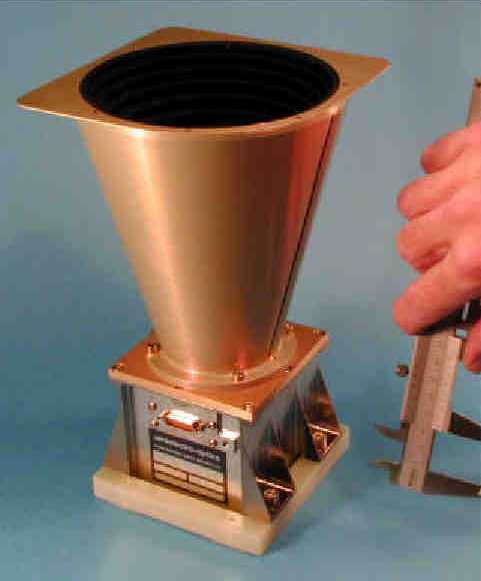Spacecraft Navigation Laboratory
The laboratory
includes facilities and
equipment for the
research of space-based orbital determination systems including signal receivers
and software processors to receive signals from GPS and other forthcoming GNS
systems.
The laboratory is investigating novel new techniques in star
identification for spacecraft and in image centriod determination.
Selected Publications
BM Quine, V Tarasyuk, H Mebrahtu, R Hornsey - Determining
star-image location: A new sub-pixel interpolation technique to
process image centroids, Computer Physics Communications, Volume
177, Issue 9, p. 700-706, 2007.
Abstract: We develop a theoretical methodology
to estimate the location of star centroids in images recorded by CCD and
active pixel sensors. The approach may be generalized to other
applications were point-sources must be located with high accuracy. In
contrast with other approaches, our technique is suitable for use with
non-100% fill ratio sensors. The approach is applied experimentally to
two camera systems employing sensors with fill-ratios of approximately
50%. We describe experimental approaches to implement the new paradigm
and characterize centroid performance using laboratory targets and
against real night-sky images. Applied to a conventional CCD camera, a
centroid performance of 11.6 times the raw pixel resolution is achieved.
Applied to a camera employing an active-pixel sensor a performance of
12.8 is demonstrated. The approach enables the rapid development of
autonomous star-camera systems without the extensive characterizations
required to derive polynomic fitting coefficients employed by
traditional centroid algorithms.
B M Quine - Autonomous
star identification, United States Patent 5935195, 1999.
 Abstract:
A method and apparatus compare a star to be identified within an image
with data in a database generated from known star data. According to a
first aspect of the invention, a target star to be identified within an
image is selected, and a number of adjacent stars, normally two, are
also selected. The separation values between the stars and a geometric
identity for each separation value are determined. This data is compared
with corresponding data stored in a database for known stars, where the
data in the database is generated using the same technique. According to
a second aspect of the invention, a target star is selected, and
adjacent stars are selected from an annulus centered on the target star.
The separation values for the stars are determined and compared with
known separation values stored in a database, where the data in the
database is generated using the same annulus centered on each known
target star.
Abstract:
A method and apparatus compare a star to be identified within an image
with data in a database generated from known star data. According to a
first aspect of the invention, a target star to be identified within an
image is selected, and a number of adjacent stars, normally two, are
also selected. The separation values between the stars and a geometric
identity for each separation value are determined. This data is compared
with corresponding data stored in a database for known stars, where the
data in the database is generated using the same technique. According to
a second aspect of the invention, a target star is selected, and
adjacent stars are selected from an annulus centered on the target star.
The separation values for the stars are determined and compared with
known separation values stored in a database, where the data in the
database is generated using the same annulus centered on each known
target star.